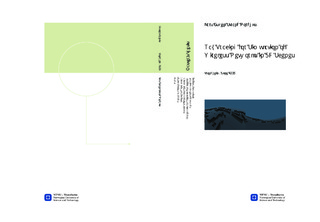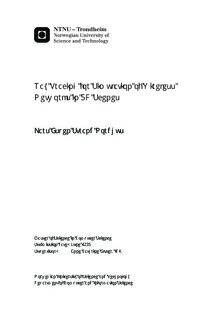| dc.contributor.advisor | Elster, Anne Cathrine | nb_NO |
| dc.contributor.author | Nordhus, Lars Espen Strand | nb_NO |
| dc.date.accessioned | 2014-12-19T13:40:16Z | |
| dc.date.available | 2014-12-19T13:40:16Z | |
| dc.date.created | 2013-10-12 | nb_NO |
| dc.date.issued | 2013 | nb_NO |
| dc.identifier | 655636 | nb_NO |
| dc.identifier | ntnudaim:9070 | nb_NO |
| dc.identifier.uri | http://hdl.handle.net/11250/253389 | |
| dc.description.abstract | Simulating WIFI and other similar radio waves in real-time environments has a tremendous potential, and is a hot topic in modern computer science. The Norwegian Road Authority in Trondheim (Norway) has created a physical test road for simulating future road to vehicle communications in a realistic setting. By doing so they get an excellent physical simulator for realistic small scale testing which can be used to verify a computational simulator. IEEE has created a vehicle-to-vehicle communication standard called IEEE 802.11p: Wireless Access for the Vehicular Environment (WAVE) [Wireless Access in Vehicular Environments]. On the 24th of April 2013, the cross country cooperation Compass4D met in Denmark, where 90 buses will be equipped and tested using this standard for at least one year [http://www.ertico.com/compass4d-project-consortium-meets-in-denmark-where-90-buses-will-be-equipped-and-trialed-for-at-least-one-year/]. These examples are just some of the many great contributions which are aiming towards developing a technology to better the efficiency and safety of roads.In this project, we develop a comprehensive real-time large scale WiFi simulator. It simulates vehicle-to-vehicle and vehicle-to-road communication, and can be a good supplement to systems like the ones in Denmark and Norway. To make large scale testing possible and affordable, we have created a way to generate simplified versions of real life streets and structures using Open Street Maps. The goal of this thesis is to make it possible to simulate dynamic traffic environments with communication in real-time.To achieve this, we harness the compute power of graphics cards which is shown to be extremely powerful in solving massive parallel tasks like ray tracing, the core computational method used in our work. In our case, we use it to trace line-of-sight for the mobile WiFi signals (rather than photon rays). This is done by using the NVIDIA OptiX ray tracing engine for most of the heavy calculations. Using the same framework, we also implement a dynamic environment with both static and moving senders/receivers to illustrate a realistic traffic scenario.Our system has been tested on several benchmarks to examine how it performs in different scenarios. Our results show that it is feasible to created a system capable of simulating medium resolution scenarios with a great number of senders, buildings and moving obstacles in real-time with a frame rate of at least 24fps. We also show that the number of objects, the resolution and even the number of receivers can be increased substantially when simulating vehicle-to- vehicle communication, since it requires lower update rates. Several ideas for how to extend this work is also included. | nb_NO |
| dc.language | eng | nb_NO |
| dc.publisher | Institutt for datateknikk og informasjonsvitenskap | nb_NO |
| dc.title | Ray Tracing for Simulation of Wireless Networks in 3D Scenes | nb_NO |
| dc.type | Master thesis | nb_NO |
| dc.source.pagenumber | 71 | nb_NO |
| dc.contributor.department | Norges teknisk-naturvitenskapelige universitet, Fakultet for informasjonsteknologi, matematikk og elektroteknikk, Institutt for datateknikk og informasjonsvitenskap | nb_NO |

